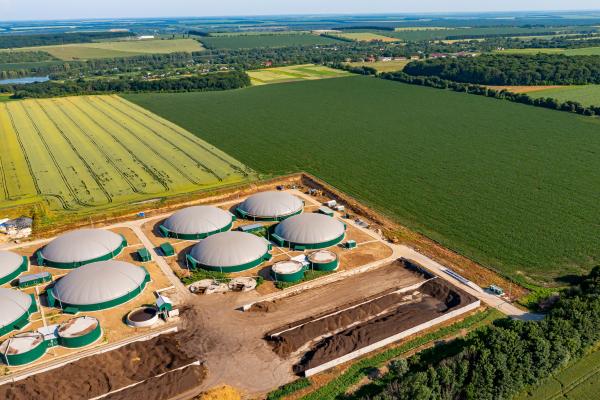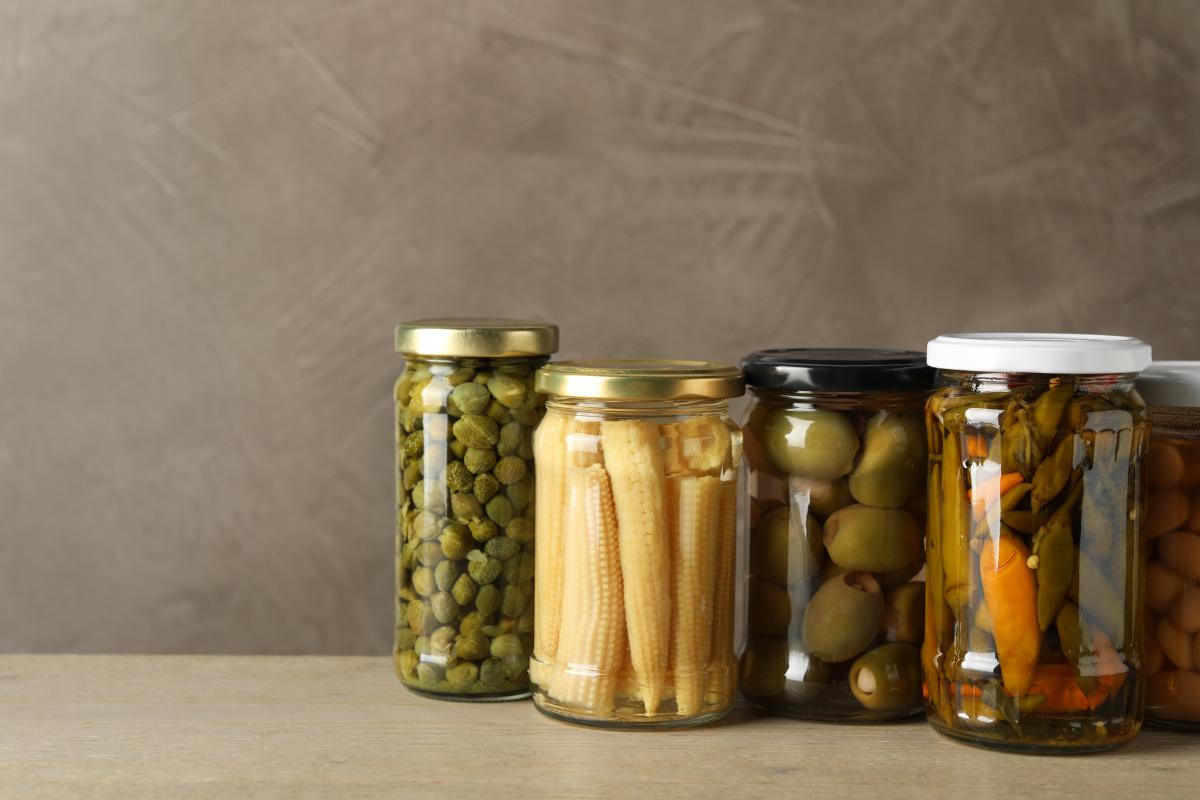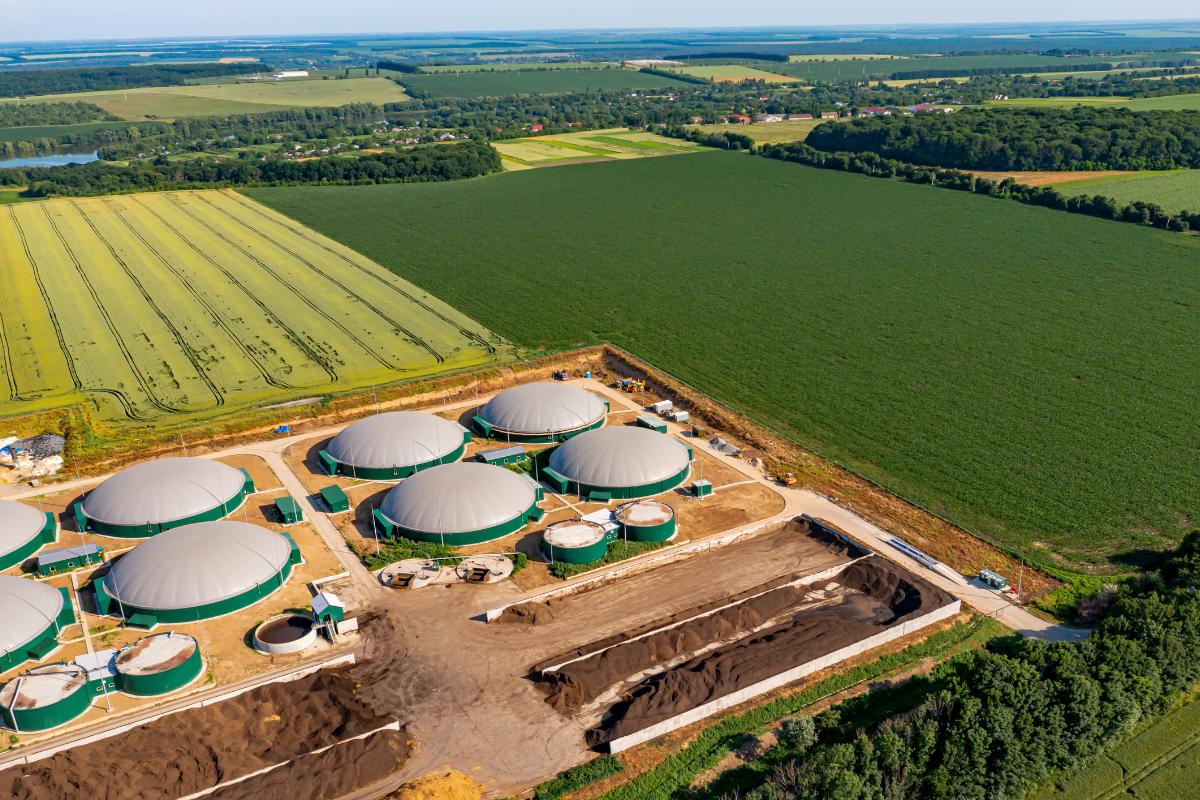What Are the Types of Fermentation?


Fermentation is a process where tiny organisms like bacteria and yeast cause chemical changes in food and other materials. It's how we get yogurt and wine, but it's used for much more than just food. Fermentation plays a role in everything from making energy to creating new medical materials. Different types of fermentation produce different things, making them useful for various purposes.
In the following article by thedailyECO we explore the different types of fermentation and its different uses. From preserving food to developing sustainable materials, fermentation has a lot to offer.
- What is fermentation and its uses?
- What is the difference between fermentation and cellular respiration?
- Types of fermentation
- Alcoholic (Ethanol) fermentation
- Lactic fermentation
- Acetic acid fermentation
- Butyric fermentation
- Propionic acid fermentation
- Mixed acid fermentation
- Butanediol fermentation
What is fermentation and its uses?
Fermentation is a metabolic process where organisms break down carbohydrates to produce energy (ATP) without using oxygen. While commonly associated with microorganisms like yeast and bacteria, many organisms can perform fermentation.
Fermentation enables organisms to extract energy from a variety of carbohydrates, such as:
- Simple sugars (e.g., glucose, fructose)
- Disaccharides (e.g., sucrose, maltose, lactose)
- Complex carbohydrates (which must first be broken down into simpler sugars)
Where does fermentation occur in nature?
Fermentation is a widespread natural process, occurring in environments ranging from soil to the human body. In human muscle cells, lactic acid fermentation provides crucial energy during intense exercise when oxygen becomes limited. This same process occurs in many other organisms when oxygen is scarce. In the natural world, soil microorganisms use fermentation to break down organic matter, contributing to nutrient cycling and soil health. Various species of wild yeasts ferment fallen fruits, while beneficial bacteria ferment plant materials in the digestive systems of many animals.
Fermentation's versatility makes it invaluable. It's crucial in traditional food production (bread, wine, beer, yogurt, pickles, miso), modern biotechnology (antibiotics, enzymes, vitamins), and sustainable solutions (bioethanol, waste treatment, biodegradable materials). Its industrial uses, like producing organic acids and solvents, are constantly expanding
What is the difference between fermentation and cellular respiration?
Imagine your body needing energy, like when you're exercising. Your cells primarily use a process called cellular respiration to get this energy from sugars, much like burning wood to get heat. Cellular respiration is very efficient, but it needs oxygen to work properly.
Now, imagine you're running a sprint. Your muscles need energy fast, and sometimes, they can't get enough oxygen quickly enough. That's where fermentation comes in. It's like a backup energy system that can kick in when oxygen is limited.
The key difference between fermentation and cellular respiration is how they keep the energy-producing process going. Cellular respiration uses oxygen to recycle a crucial molecule called NAD+, which is needed for the first step of energy extraction (called glycolysis). Think of NAD+ as a reusable battery. When it's "charged" (NAD+), it can pick up electrons and become "discharged" (NADH). Cellular respiration uses oxygen to recharge NADH back to NAD+.
Fermentation, on the other hand, doesn't use oxygen. Instead, it uses other organic molecules (like the products of the partial breakdown of sugar) to recycle NADH back to NAD+. It's less efficient than cellular respiration, producing much less energy, but it's a vital survival mechanism when oxygen is scarce.
This is why your muscles might feel tired and sore after a sprint, they've likely switched to fermentation to keep going when oxygen supply couldn't keep up with the energy demand. The "burn" you feel is often due to byproducts of fermentation, like lactic acid.
Types of fermentation
While all fermentation shares the core idea of energy production without oxygen, the process itself can take many different routes. Each path leads to unique end products and serves specific biological purposes.
- Alcoholic (Ethanol) fermentation: used in bread making and the production of beer, wine, and other alcoholic beverages.
- Lactic acid fermentation: common in muscle cells during intense exercise and in the production of yogurt, sauerkraut, and pickles.
- Acetic acid fermentation: creates vinegar and other acidic products used in food preservation.
- Butyric acid fermentation: occurs in butter aging and certain cheese production processes.
- Propionic acid fermentation: essential in Swiss cheese production, creating its distinctive holes and flavor.
- Mixed acid fermentation: produces multiple organic acids, common in enterobacteria.
- Butanediol fermentation: results in 2,3-butanediol production, important in industrial processes.
Each type of fermentation has evolved to help organisms thrive in specific environments, from our guts to the soil beneath our feet.
In the following sections, we'll dive deeper into each type of fermentation, exploring their unique characteristics, products, and how we use them.
Alcoholic (Ethanol) fermentation
Alcoholic fermentation, primarily carried out by yeasts like Saccharomyces cerevisiae, converts glucose into ethanol and carbon dioxide. Sugar gets partially broken down into pyruvate. Then, because there's no oxygen, the pyruvate gets changed into acetaldehyde, and the acetaldehyde is finally converted into the alcohol, ethanol. It's a simple but clever way for yeast to get energy when oxygen isn't around.
What is alcoholic fermentation used for?
- Beer production using different strains of Saccharomyces cerevisiae, each creating unique flavor profiles.
- Wine making where yeast strains interact with grape varieties to produce distinct characteristics.
- Bread leavening through CO2 production while developing flavors through secondary metabolites.
- Industrial bioethanol production from various feedstocks (corn, sugarcane, cellulosic materials).
- Research applications in biotechnology and molecular biology studies.

Lactic fermentation
Lactic acid fermentation occurs in two distinct pathways: homofermentative and heterofermentative.
In homofermentative fermentation, glucose is converted solely to lactic acid. This process is exemplified by organisms such as Lactobacillus casei and Streptococcus thermophilus, which are crucial in the production of yogurt. These bacteria convert lactose in milk entirely to lactic acid, contributing to the characteristic tang of the final product.
Heterofermentative fermentation differs from homofermentative fermentation in its products. While homofermentative fermentation produces only lactic acid, heterofermentative pathways, used by a variety of bacteria, generate a wider range of compounds. These include lactic acid, but also other products like ethanol, acetic acid, and carbon dioxide. This diversity of end products contributes to the varied flavors found in different fermented foods.
What is lactic fermentation used for?
- Dairy fermentation creating yogurt, transforming milk proteins and creating beneficial compounds.
- Traditional lacto-fermented vegetables: kimchi (using Lactobacillus kimchii), sauerkraut, etc.
- Energy production in muscle cells during intense exercise when oxygen is limited, converting glucose to lactate.
- Sourdough cultures where wild yeasts and Lactobacillus work together to develop complex flavors.
- Biodegradable medical materials like PLA (polylactic acid) sutures that naturally dissolve
- Development of lactic acid for natural skin exfoliation in cosmetics.
Curious about extreme microbial life? Dive into our article about bacteria that thrive in environments too salty for most life forms.

Acetic acid fermentation
Acetic acid fermentation is a two-stage process. It begins with alcoholic fermentation, typically carried out by yeasts, which produces ethanol. In the second stage, Acetobacter bacteria convert this ethanol to acetic acid.
Uniquely among common fermentation types, this process requires oxygen. The resulting product, vinegar, has a characteristic sour taste and preservative properties.
What is acetic acid fermentation used for?
- Food preservation: various vinegars (balsamic, apple cider, rice), pickled products, and natural preservatives.
- Agricultural uses: natural herbicides, plant growth stimulants, and soil amendments.
- Industrial applications: textile processing, cleaning products, and chemical manufacturing.
- Healthcare products: therapeutic vinegars, natural remedies, and pharmaceutical ingredients.
Did you know that fermented products like vinegar can help your garden thrive? Learn about this eco-friendly gardening solution in our other article.

Butyric fermentation
Butyric acid fermentation, carried out by bacteria like Clostridium butyricum and related species, produces butyric acid, carbon dioxide, and hydrogen gas. While often associated with food spoilage, this process also plays a vital role in the production of certain cheeses, traditional fermented foods, and the industrial production of various chemicals.
What is butyric fermentation used for?
- Cheese development, contributing to the complex flavors in aged cheeses.
- Food industry applications for creating butter-like flavors.
- Medical research studying gut health and potential cancer treatments.
- Industrial production of plastics and fibers.
- Fragrance industry for specific scent compounds.
- Animal feed supplements to improve digestive health.
Want to expand your knowledge of microorganisms beyond fermentation? Check out our detailed comparison of two fundamental types of microbes.

Propionic acid fermentation
Propionic acid fermentation, performed by Propionibacterium freudenreichii and related species, converts lactate into propionic acid, acetic acid, and carbon dioxide. The carbon dioxide production is responsible for the characteristic holes in Swiss cheese, while the propionic acid itself contributes to its distinctive flavor.
What is propionic acid fermentation used for?
- Cheese production, particularly creating the characteristic holes and flavor in Swiss-type cheeses.
- Natural food preservation in baked goods and dairy products.
- Animal feed preservation to prevent mold growth in stored grains.
- Vitamin production, particularly vitamin B12 for supplements.
- Flavor development in food products, especially dairy-based foods.
- Industrial chemicals production for various manufacturing processes.

Mixed acid fermentation
Mixed acid fermentation, common in enterobacteria such as Escherichia coli, produces a variety of acids, including lactic, acetic, succinic, and formic acid, as well as gases like hydrogen and carbon dioxide.
What is mixed acid fermentation used for?
- Waste treatment in environmental management systems.
- Biogas production from organic waste materials.
- Food preservation through multiple acid production.
- Industrial chemical production for various applications.
- Bioplastic manufacturing from fermentation products.
- Water treatment processes in environmental management.
Did you know that some types of fermentation are key to producing renewable energy? Learn how microorganisms help create sustainable fuels in our guide to biomass energy.

Butanediol fermentation
Butanediol fermentation, found in organisms such as Klebsiella and Enterobacter, produces 2,3-butanediol, ethanol, and various organic acids. This pathway has industrial applications in the production of chemical precursors, solvent manufacturing, and potentially, biofuel production.
What is butanediol fermentation used for?
- Synthetic rubber production for industrial applications.
- Plastic manufacturing as a key chemical component.
- Antifreeze production for industrial and consumer use.
- Solvent production for industrial processes.
- Sustainable materials development for eco-friendly products.
- Chemical manufacturing for various industrial applications.

If you want to read similar articles to What Are the Types of Fermentation?, we recommend you visit our Biology category.
- Álvarez, Y. (2010). Lactic fermentation. http://sgpwe.izt.uam.mx/files/users/uami/acym/ferementacion_lactica.pdf
- Bonet, A., & Fernández, B. (2006). Butyric contamination of milk: Causes and effects on cheeses. https://www.mapa.gob.es/ministerio/pags/biblioteca/hojas/hd_1995_10.pdf
- Martinez, J. (n.d.). Chapter 12: Other carbohydrate metabolic pathways. Retrieved from https://libroelectronico.uaa.mx/capitulo-12-otras-vias/index.html
- Milagros, S., Ramírez, R., & Quispe, J. (2018). Citrus fermentation. Polytechnic School of Chimborazo.
- Simon Bolivar Institute. (2018). Reproduction of Bulgarians «Lactobacillus bulgaricus». https://isb.edu.mx/reproduccion-de-bulgaros-lactobacillus-bulgaricus/












